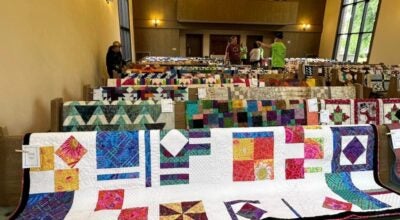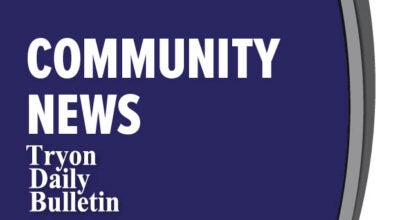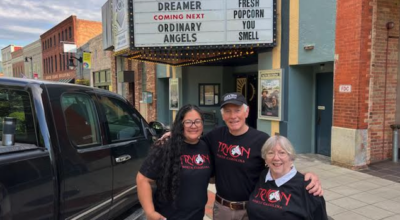Habitat volunteers build affordable, safe housing
Published 11:38 pm Wednesday, November 13, 2013
Thermal Belt Habitat for Humanity offers affordable, clean housing to family partners throughout Polk County and Landrum, and volunteers consistently express the satisfaction received from building safe, affordable homes for people who really need them and have a strong work ethic, too.
“I enjoy working with my hands, building things, and I have a knack for helping new people learn the Habitat way of doing things,” said Bob Montgomery, Board President for Thermal Belt Habitat for Humanity.
Montgomery joins an entire crew of individuals who feel the same way he does about community action and meaningful work.
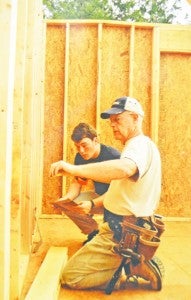
Lee Cobourn and another Habitat volunteer measure out framework inside a recent home built for a local family.
“Our mission is to help families obtain decent, affordable housing. The main qualification for any applicant would be a willingness to work, and that’s what we need in our volunteers, too,” said Lee Cobourn, director of construction for Thermal Belt Habitat for Humanity. ““All my adult life, I have felt a real need to give back to the community.”
Habitat for Humanity has experienced some challenges in finding qualified partners to receive the Habitat houses in this area, particularly with the economic downturn. New owners of Habitat houses must have the means to pay back their zero interest mortgages.
“We have good partnerships in this area,” Montgomery said. “We have people so excited, they want to pay ahead on their zero interest loans, but we always suggest that they put that money aside for their children’s educations.”
Partners apply through the Family Selection Committee, and then work with the Family Support Committee.
“It’s important to emphasize it’s a hand up, not a handout,” Cobourn said emphatically. “We have built 65 houses in Polk County, with no interest on the mortgage loans and when you spread the payments over thirty years, they are really reasonable. We do all the taxes and escrow work, and the families pay around $325 a month for their mortgage.”
Each affiliate has its own criteria on sweat equity, down payment and staffing. Habitat for Humanity branches across the world share the same basic values, and a deep desire to create housing opportunities.
“One of our most important goals is sweat equity. We want to make sure folks who partner with us are very serious about home ownership,” Montgomery said.
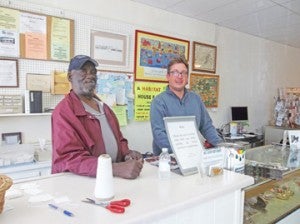
Two of the many Habitat Restore volunteers, Robert Stepp (left) and Mark Coppage (right). (photo by Kiesa Kay)
The program requires 200 hours of sweat equity per adult and a $500 down payment. After people qualify, they have six months to get that down payment together.
“We want to nurture families through the building process. We work with volunteer crews, and we practice the closing process with the families, ensuring that there’s no hidden agenda,” Montgomery said.
Thermal Belt Habitat for Humanity has 23 or 24 construction volunteers, and most of them have more than 10 years of experience.
“Our crew has in excess of 230 man-years of construction experience specifically working for Habitat,” Cobourn said, with a touch of pride in his voice. “All of them enjoy working with their hands, building things, and the camaraderie of the group. We work hard, but we have a lot of fun doing it, and it’s a tremendous source of personal satisfaction.”
Volunteers also staff the ReStore at 132 N. Trade Ave. in Landrum. The Landrum ReStore sells used furniture and household goods at greatly reduced prices, and the income benefits Habitat projects. Although many such places exist now, the ReStore in Landrum was the first operation of its kind for Habitat for Humanity in all of the United States, Montgomery said. Tom Cannell and his wife initiated that work, and some of the original members still work there. The IRS letter initiating the ReStore is dated 1985.
“People volunteering for Habitat can learn how to price and sell objects in the showroom at the ReStore, or can learn to do construction on the projects we have,” Montgomery said.
Habitat for Humanity has become a worldwide organization, and some members travel to distant lands for building projects. They pay their own way, and join a crew building. Local Habitat members have traveled far including a building blitz experience in Somalia.
“One couple met on a Jimmy Carter work project for Habitat, fell in love, and got married on the roof of the house they were building,” Montgomery said. .
They had a pastor and an Appalachian fiddler on the roof during the ceremony, and the next day, they were building again. That bride wore a bridal veil and construction boots.”
Through the years, the houses themselves have changed and modernized a good bit. When Thermal Belt Habitat for Humanity began, Cobourn said, central air simply did not appear in the houses. Now, central air definitely has become part of the Habitat package.
“We are working on building green, with energy efficiency and reutilization of existing materials,” Cobourn said.
Most of the 65 families who have partnered with Thermal Belt Habitat for Humanity have kept their homes, but a few found that they couldn’t fulfill the requirements, and they had to relinquish their homes.
“We make significant efforts at financial counseling if we can’t bring them up to speed quickly,” he added. “We also can’t accept someone who lacks legal immigration status at this time.”
Partners in the Habitat plan do get a nice, newly constructed home. In return, they have to understand the paperwork involved with the two mortgages. The cost of the land, paired with the dedication of volunteers intent on rehabilitating that land, can put a crimp in the family budget.”
If Habitat partners remain in the house, then they get an interest-free loan and are charged only for the cost of materials. If they move, they have to pay off the second mortgage for the cost of the volunteer labor. Someone who sells out early will have to pay for the cost of that volunteer labor, whereas someone who remains in the house will keep that cost as a voluntary donation and there will be no need to repay.
“The second is an incentive for people to stay and pay off the whole amount, to become part of the neighborhood,” Cobourn said.
Thermal Belt Habitat for Humanity has started the permitting process on their next project, and plan to break ground no later than this spring.
Anyone who would like to partner with Habitat for Humanity and put in the sweat equity to receive a new home must have lived in Polk County or
Landrum for at least a year, and must have an actual need for safe, affordable housing. They also will have to discuss income, credit history and ability.
For example, a family of three must make $23,950, but no more than $38,300.
The ReStore number, 864-457-2666, would be the place to call for someone on the Family Selection Committee. The chairman is Mary Ellen Krydynski, 828-859-5788.
All volunteers and board members have to use their own insurance, and many of them have worked on multiple projects together.
In addition to seeking fundraising volunteers, Habitat would enjoy having licensed electricians and plumbers donate time, but people of all skill levels are welcome to volunteer.
“It’s such a great group of people,” Cobourn said. “Volunteers become friends who enjoy working together.”



